What's New
Displaying results 3041 - 3050 of 4923
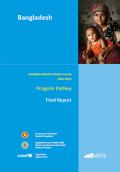
Resource | Publications,
The Multiple Indicator Cluster Survey (MICS) was carried out in 2012-2013 by Bangladesh Bureau of Statistics (BBS) in collaboration with UNICEF Bangladesh, as part of the global MICS programme. Technical and financial support was provided by the United Nations Children’s Fund (UNICEF).
The global MICS programme was developed by UNICEF in the 1990s as an international household survey programme to support countries in the collection of internationally comparable data on a wide range of indicators on the situation of children and women. MICS surveys measure key indicators that allow countries to generate data for use in policies and programmes, and to monitor progress towards the Millennium Development Goals (MDGs) and other internationally agreed upon commitments.
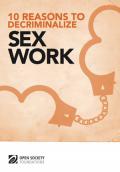
Resource | Publications,
This document provides ten reasons why decriminalization of sex work is the best policy for promoting the health and human rights of sex workers, their families, and communities. Decriminalization refers to the removal of all criminal and administrative prohibitions and penalties on sex work, including laws targeting clients and brothel owners. It differs from legalization, which is a legislative regime characterized by significant regulations—many of which can limit rights and protections, create mechanisms for abuse by authorities, and have other negative impacts on sex workers.
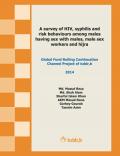
Resource | Publications,
Bangladesh has been providing HIV prevention services for males having sex with males (MSM), male sex worker (MSW) and hijra for more than a decade. In parallel to providing HIV prevention services, Bangladesh has been collecting risk behaviour and HIV prevalence data on these population groups through a national surveillance system which was set up by the Government of Bangladesh in 1998. The surveillance system has been crucial in providing key information that has helped Bangladesh to monitor changes in risk behaviours and infection prevalence over time, the data has been the backbone against which the national HIV strategic plans have been developed and global reports have been prepared. These data also enable measuring the effect of the on-going large scale HIV prevention programs for MSM, MSW and hijra.
From September 2013 to February 2014 a cross sectional survey was conducted to assess changes in risk behaviours and prevalence of HIV and active syphilis among MSM, MSW, and hijra.
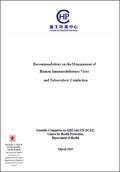
Resource | Publications,
In Hong Kong, extrapulmonary TB and, at CD4 count <200/μL,pulmonary TB and TB of cervical lymph node are AIDS-defining conditions. From 1996 to 2012, 358 (26.5%) of reported AIDS were defined primarily by TB. In 2005 and 2007, it briefly overtook Pneumocystis jiroveci pneumonia as the most common AIDS-defining condition. It is estimated that 1% of all TB disease in Hong Kong is associated with HIV. The corresponding figure in the US is 8%.
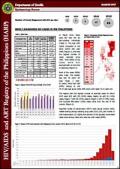
Resource | Fact Sheets,
In March 2015, there were 667 new HIV Ab sero-positive individuals. This was 34% higher compared to the same period last year (498), and was the highest number of cases reported since 1984. Most (96%) of the cases were still asymptomatic at the time of reporting.
Most of the cases (96%) were male. The median age was 28 years old (age range: 2 year-61 years). More than half (56%) belong to the 25-34 year age group while 26% were youth aged 15-24 years old.
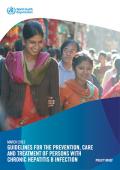
Resource | Guidelines,
These are the first World Health Organization (WHO) guidelines for the prevention, care and treatment of persons living with CHB infection.
The recommendations are structured along the continuum of care for persons with CHB from initial assessment of stage of disease and eligibility for treatment, to initiation of first-line antiviral therapy and monitoring for disease progression, toxicity and HCC, and switch to second-line drugs in persons with treatment failure. They are intended for use across age groups and adult populations.
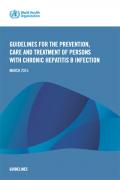
Resource | Guidelines,
The recommendations in these guidelines promote the use of simple, non-invasive diagnostic tests to assess the stage of liver disease and eligibility for treatment; prioritize treatment for those with most advanced liver disease and at greatest risk of mortality; and recommend the preferred use of nucleos(t)ide analogues with a high barrier to drug resistance (tenofovir and entecavir, and entecavir in children aged 2–11 years) for first- and second-line treatment. Recommendations for the treatment of HBV/HIV-coinfected persons are based on the WHO 2013 Consolidated guidelines on the use of antiretroviral drugs for treating and preventing HIV infection, which will be updated in 2015.
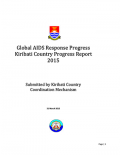
Resource | Publications,
This 2015 Global AIDS Response Progress (GARP) report presents Kiribati national HIV response for the year 2014 in line with a number of international commitments to which Kiribati is a party to. In addition to the 2000 Millennium Declaration, the 2011 UN Political Declaration on HIV and AIDS builds on two previous political declarations: the 2001 Declaration of commitments on HIV/AIDS, and the 2006 Political Declaration on HIV/AIDS. Now by 2015, we have reached the deadline, and it is timely that we now take stock of all our efforts in combating HIV/AIDS in Kiribati.

Resource | Publications,
The 2014 Palau Country Report to the Global Aids Response Progress Report (GARPR) is the result of the collaborative efforts between stakeholders including the Ministry’s own Bureau of Public Health, the Bureau of Hospital & Clinical Services and the recently inaugurated Bureau of Nursing. Additional support and guidance was provided by external stakeholders and partners including the Palau HIV/AIDS & STI Advisory Group (PHASAG) whose constitution includes families of People Living with HIV/AIDS (PLWHA), special populations, The National Congress, traditional organizations and community groups, among others. The purpose of this report is to provide an overview of the epidemic, relevant statistics and programmatic responses.
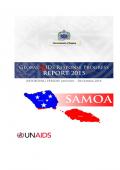
Resource | Publications,
In this reporting round to Global AIDS Response Progress Reporting, Samoa’s country report covers the period of January-December 2014. This is the 4th time Samoa has submitted an overarching report and to this global mechanism, so as to show support towards our Global fight to ending further transmission of HIV and AIDS globally, thus saving more lives.
This country report was prepared in an effective consultative manner. A consultation was held with our Sexual Reproductive Health stakeholders that encompass both HIV/AIDS and SRH representatives. Given that there was very limited data that could respond to all different sets of indicators given, the focus of this report is directed in its narrative section which provides a complete outlook of Samoa’s response to HIV/AIDS nationally.





